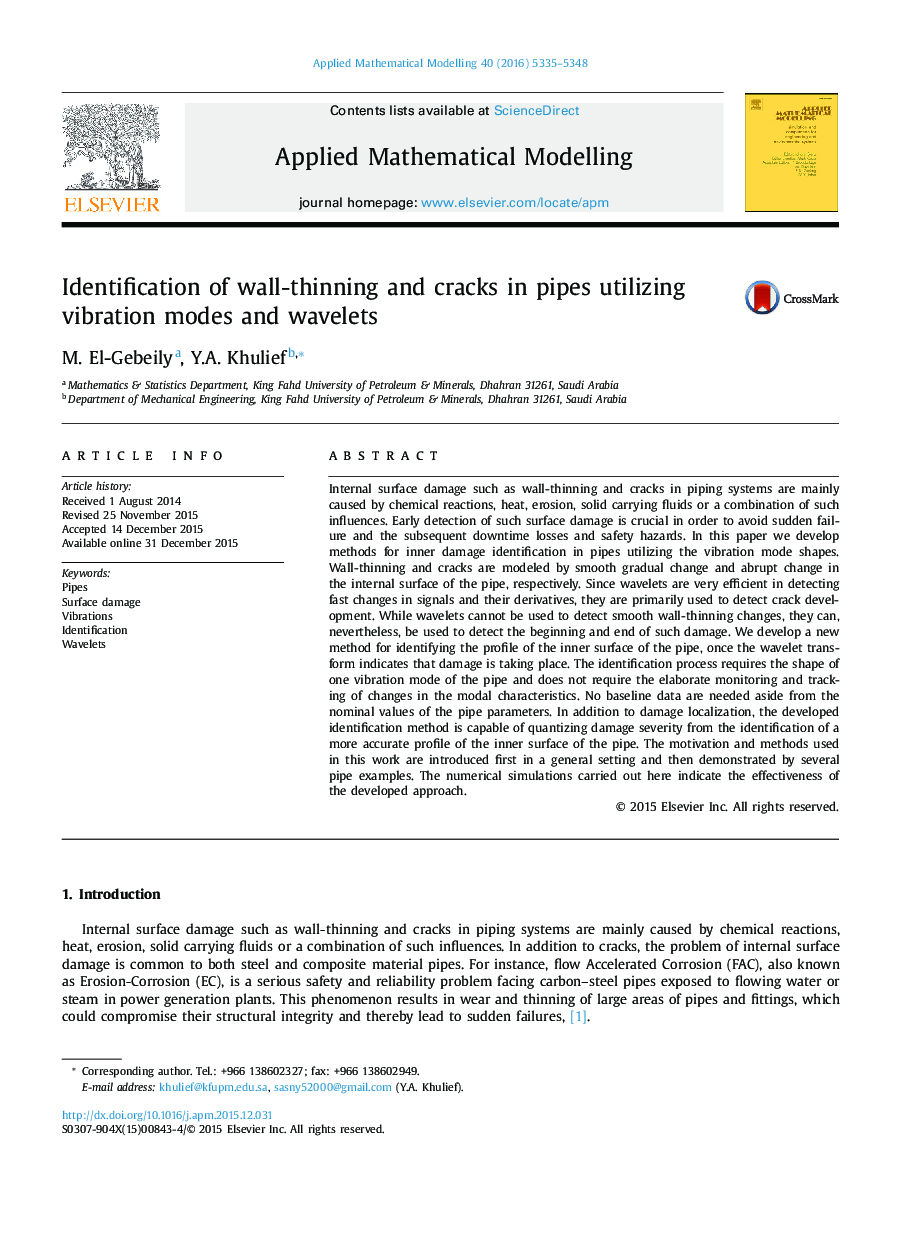| Article ID | Journal | Published Year | Pages | File Type |
|---|---|---|---|---|
| 1702958 | Applied Mathematical Modelling | 2016 | 14 Pages |
Abstract
Internal surface damage such as wall-thinning and cracks in piping systems are mainly caused by chemical reactions, heat, erosion, solid carrying fluids or a combination of such influences. Early detection of such surface damage is crucial in order to avoid sudden failure and the subsequent downtime losses and safety hazards. In this paper we develop methods for inner damage identification in pipes utilizing the vibration mode shapes. Wall-thinning and cracks are modeled by smooth gradual change and abrupt change in the internal surface of the pipe, respectively. Since wavelets are very efficient in detecting fast changes in signals and their derivatives, they are primarily used to detect crack development. While wavelets cannot be used to detect smooth wall-thinning changes, they can, nevertheless, be used to detect the beginning and end of such damage. We develop a new method for identifying the profile of the inner surface of the pipe, once the wavelet transform indicates that damage is taking place. The identification process requires the shape of one vibration mode of the pipe and does not require the elaborate monitoring and tracking of changes in the modal characteristics. No baseline data are needed aside from the nominal values of the pipe parameters. In addition to damage localization, the developed identification method is capable of quantizing damage severity from the identification of a more accurate profile of the inner surface of the pipe. The motivation and methods used in this work are introduced first in a general setting and then demonstrated by several pipe examples. The numerical simulations carried out here indicate the effectiveness of the developed approach.
Related Topics
Physical Sciences and Engineering
Engineering
Computational Mechanics
Authors
M. El-Gebeily, Y.A. Khulief,
